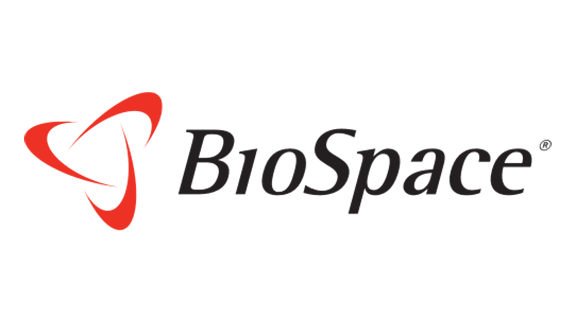Biotech Gets Creative to Avoid Bankruptcy in 2024
By Ana Mulero
Jan. 10, 2024
A total of 41 companies declared bankruptcy in 2023, according to SEC filings, an all-time high. And this is far from the only indicator of the industry’s poor financial conditions. The biotech industry is grappling with its worst bear market in recent memory, marked by challenges in obtaining fresh capital and cost-cutting measures such as layoffs.
In such a dreary funding climate, experts spoke with BioSpace about a paradigm shift in financial strategies, with increased use of royalty financing, spun-out assets and venture debt, among other nontraditional sources of cash.
There is a need to reevaluate conventional deals where companies sell common stock at market price or at a slight discount because “if you don’t and don’t get realistic, you’re going out of business; you’re going to run out of money,” said Ira Leiderman, managing director of healthcare at investment banking firm Cassel Salpeter & Co.
Growth in Royalty Financing
One of the alternatives that companies are increasingly turning to is royalty financing—funding based on future revenue-sharing agreements. Royalty financing looks attractive to companies, generally speaking, because these are non-diluted sources that do not affect their equity value, experts explained to BioSpace. In contrast, venture capital funding, angel investors, IPOs, convertible notes, stock options and warrants, rights offerings and secondary offerings all typically dilute equity.
Royalty financing has “carved out its place in the market,” said Brad Sitko, chief investment officer at XOMA, because “you’re selling economics,” not shares.
Historically, royalty financing has been dominated by three firms—Royalty Pharma, HealthCare Royalty Partners and Blackstone. They made up an average of 70% to 80% of the royalty dollars over the last couple of years, said Cody Powers, a partner and principal of portfolio and pipeline at management consulting services company ZS Associates. But now, more and more companies are adopting royalty financing. “There are more players now, and even more people are trying to get in,” Powers told BioSpace.
There are risks, however. If the company gives up too much upfront in a royalty deal and receives too little of a product’s revenue down the line, it can have serious financial consequences. “But given the choice between developing nothing and developing something, a lot of companies right now are just saying, ‘We’ll just deal with lower profitability,’” said Powers, adding that “it’s hard to imagine” the royalty financing space would not continue growing moving forward.
Ravi Samavedam, chief innovation officer at quality and compliance solutions company Azzur Group, also noted a growing trend among early-phase startups constrained by limited capital: offering future royalties in exchange for a firm’s services. This allows them to conserve funds for scientific endeavors, with the expectation of one day making payments based on the revenue generated by their assets.
Yet Leiderman cautions that licensing deals, including royalty financing, can take too long to help the company stay afloat. “Doing a licensing deal takes six to nine months minimum,” he said. “If you’re relying on that to pay the rent and make payroll, it’s pretty dangerous.” So, in some cases, companies may want to consider other options, he added.
Alternative Funding Strategies
Recent layoffs have depleted companies’ expertise, leading to a trend of transferring less mature programs to other entities through licensing agreements or partnerships, Samavedam told BioSpace. Besides royalty funding, companies can consider mergers and reverse mergers, or sharing the license with another firm to co-market therapies in specific geographic locations.
Another funding option is venture debt. Instead of selling ownership stakes in exchange for capital, companies access non-dilutive financing through VC loans. This, however, can be challenging for biotechs without a clear repayment plan, according to Sitko.
Grant financing is yet another avenue, but its unpredictability make it an unreliable solution for many companies, Sitko said.
Lain Anderson, managing director and partner at strategy consulting firm L.E.K. Consulting, also brought up the hub-and-spoke model, which he called “an emerging trend.” This approach involves dividing a portfolio into distinct entities and fundraising for them separately, he said. It caters to investors who may prefer to invest in specific assets, seeking transparency about the allocation of their funds within the portfolio.
In general, Sitko said the right advice to companies is to use the fishing analogy and have as many lines in the water as possible. “You don’t know what is going to turn over and be the positive financing event you’re seeking and will allow you to continue.”
Keep Valuations Reasonable
Whether pursuing traditional or alternative investments, appropriate company valuations are important, experts told BioSpace. A company’s valuation directly influences the terms on which it can secure funding, and many companies these days make the mistake of overvaluing their worth, said James Cassel, chairman and co-founder of Cassel Salpeter.
“It may be that the seller has to give some consideration to taking earn-outs, milestone payments and other types of structures because what they really need is the buyers coming into the finance process moving forward, and some people are unrealistic about this until it’s too late,” Cassel told BioSpace. “No one has gone out of business from dilution, and it’s better in many cases to keep a smaller part of your company funded than own 100% of your company that goes out of business.”
Ana Mulero is a freelance writer based in Puerto Rico. She can be reached at anacmulero@outlook.com and @anitamulero on X.
Click here to read the PDF.
Click here to read the full article.




